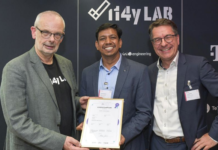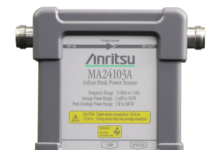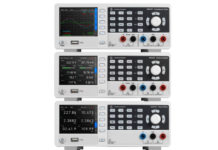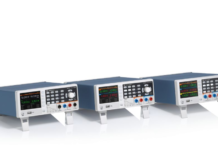
OTA testing lets engineers see what truly happens as the radio waves propagate over the air from the user equipment to the base station and back. It examines the safety, performance, and reliability of wireless devices and predicts their proficiency in the real world. Robert Rehammar, Chief Technology Officer, Bluetest shares insights on the need for OTA testing and how it’s different for 5G and IoT communities. He further addresses Test challenges associated with 5G, MIMO OTA Testing and explores many OTA tech topics.
Electronics Media: Why has over-the-air (OTA) testing started to displace traditional conducted testing? What are the recent technological trends that are accelerating OTA Testing?
RR, Bluetest: There are several reasons. First, if your device has no connector between the antenna and the transceiver, it is impossible to test anything conducted. This can be the case if you integrate your antenna directly on a PCB, which is common in IoT applications. For cellular devices, other trends such as mm-wave and massive MIMO drive this integration, also forcing the removal of connectors from the design. Another very important factor is if you want (which is typically the case) to test how the complete device performs, you then really need to include the antennas. In such an OTA set-up, the antennas are obviously included in the test, but important to note that other parts of the device that are otherwise excluded; the chassis and any coupling to other parts of the device. This gives a truer picture of important properties such as total radiated power and total isotropic sensitivity. Further, in the complete OTA test set-up, self-generated interference is properly included in the device performance test.
Electronics Media: What is driving the emphasis on OTA testing in 5G and IoT? 5G technology presents new challenges for OTA testing. What are those challenges and how to address them?

RR, Bluetest: We see that the needs and drive are quite different in the 5G and IoT communities. The 5G community is part of the larger community of cellular OEMs. They have a long history and a deep understanding of the benefits of testing. The end users are mainly operators. Also, handset testing as in many cases it is the operators that determine which devices to allow in their networks. To the operators, performance very clearly translates to cost since a poorly performing device will affect the whole network, forcing the operators to take measures – for example, to densify their deployment.
For IoT, the situation is quite different. There is a much larger number of IoT vendors and they are often smaller companies with a particular application in mind; some sensor or some other dedicated function that is not found in a smartphone. It is this function that they are interested in. The wireless connectivity is a means to an end – to give the device access to the Internet.
The wireless connectivity is often subcontracted or procured – a wireless module with integrated or separate antenna. These are then integrated in the device. The engineers responsible for that integration are hardware designers with limited experience with antennas. Thus, to many, the need for testing is not as clearly seen. However, we see many cases where testing can significantly reduce development time and cost. It is particular problematic when issues are discovered very late in the design process. Sometimes not until the device is completely finished. For example, if you integrate a GPS antenna and do not test before the complete design is finished, you may find that the plastic housing of the antenna de-tuned it, resulting in a non-functioning GPS receiver. At that stage it can be a very painful to remedy. You might for example be forced to order a new mold for your injection molded housing which is very costly and time consuming.
There are also other challenges for the IoT community, such as many competing standards and a need for consolidation. The situation is similar to the cellular industry 20 years ago with national standards that were not compatible. This is confusing for the end users; increased cost and gives less room for proper design guidelines of a quality 3GPP offer. Should I use LoRa, ZigBee or NB-IOT in my design? There is surely a need to do something about this within the industry.
For 5G, the main challenge is testing time and the number of tests that need to be performed. In parallel with that, the cellular standards become more and more complex, multiplying the number of items needed to be tested. The introduction of MIMO vastly increased testing complexity, and the introduction of carrier aggregation vastly increased the number of tests that need to be performed. When you have several carriers running at the same time, mixing products between bands can occur. Or one particular band leaking into another.
Of course, reducing test time by making the tests faster is a clear way forward. But there are also other ways to approach it. Bluetest Flow software’s batch processing is one such feature where you can create large test-sets of very many tests that can be run in batch, for example over-night. For this to work, your test software needs to be very intelligent and be able to handle e.g. if a device drops the connection. Your test set-up hardware also needs support this. You will probably need to be able to charge your device during such an extensive test, so DUT power must for example be available inside the test chamber. In Bluetest’s RTS-series of OTA test solutions, we provide almost all wired interfaces you can imagine, USB, AC or DC power, optical fiber, Ethernet, RS232 and so on.
Another challenge with 5G is the introduction of higher frequencies. To be able to efficiently do e.g. batch processing or test any carrier combination – for example one sub 6 GHz carrier aggregated with a mm-wave carrier – the OTA system needs to have the capability to test all those simultaneously. That is a capability included in Bluetest’s RTS-series – where all frequencies from 650 MHz to 43.5 GHz can be tested in a rich isotropic multipath environment in the same system.
A new exciting feature we are introducing in our RTS-system is the possibility to also test mm- wave devices under line-of-sight conditions. This is done using the newly developed Bluetest integrated mm-wave LOS solution. With this option the classical RIMP environment is available over the entire FR1-FR2 frequency band and simultaneously a LOS environment is available at FR2. This product will be made available during spring.
Electronics Media: Kindly explain the importance of OTA testing on multi-carrier and MIMO devices?
RR, Bluetest: Both of those technologies add complexity and time to the test scope. Adding MIMO to a receiver means adding more antennas. The most important property of these antennas is still the efficiency – that is, the power entering the antenna port should be radiated and not lost somewhere. However, the next important property is how the antennas are correlated. For good MIMO performance, the antennas need to be uncorrelated. This a completely new item to consider that was not at all relevant to testing for single-antenna systems. It is also an OTA property that can never be tested in any other way.
For carrier aggregation, as we discussed earlier, there are large risks that different carrier combinations interfere in undesired ways. The situation is actually similar when multiple standards are run at the same time, for example LTE and WLAN. These tests are also inherently OTA-dependent since how antennas are placed greatly can influence the end performance. The challenge with many OTA technologies is that is can be very difficult to add antennas in the system. This is where reverberation chambers really shine. Adding antennas is relatively easy and calibrating the transceiver chains can be done accurately and easily. With our RTS system we can have up to 16 antennas in the chamber, opening up to actually run very high MIMO orders and very many carriers aggregated simultaneously, without the need for external components such as combiners. This is a very appreciated feature of our solution.
Electronics Media: What are the key components of an OTA performance test system?
RR, Bluetest: The basic set-up consists of some kind of chamber where the device under test is placed. The chamber has several functions: it shields off the surrounding environment, provides mounting and alignment functionality and generates, at least parts of, the wireless channel.
Complementing the chamber is an instrument to perform measurements and emulate the access point or base station. The hardware is complemented by software to perform the measurements. I would say those are the three main components and anyone considering equipping a lab with an OTA set-up should pay equal attention to all three of them. Bluetest provides the chamber and software while we typically work together with T&M vendors to provide the test instrument. We strive to be vendor neutral in terms of communication testers and try to support whichever system our customers want to use. If a complete OTA test set-up capable of measuring multiple standards, passive and active measurements and complex set- ups such as controlled interference injection is required, several different instruments will be needed.
Electronics Media: Any comments on Reverberation Chamber VS Anechoic Chamber?
RR, Bluetest: These are the two main technologies used to perform OTA testing today. Bluetest works with reverberation chambers and we have a very strong position in that market segment.
Our view is that the two technologies are being compared to each other a bit more than what is actually constructive. Both RCs and ACs have strengths and weaknesses. Which system you should select must to be based on your specific needs. An operator can for example measure radiation patterns in an RC with some effort. However, if radiation patterns are the main driver for your need of a test system, an RC is probably not the best choice. It is better done in an AC. We believe there is a clear place for both ACs and RCs in the industry for the foreseeable future.
Electronics Media: GTT is now part of Bluetest, how it’s adding the values to the new solutions?
RR, Bluetest: Our collaboration with GTT started some years ago. They have a very strong position and extensive experience when it comes to base station testing. This is something Bluetest has not been doing before. With 5G, also much of base station testing is moving towards OTA and for that reason we see very exciting benefits of integrating our solutions. We have taken several steps in that direction and are in active discussions with several customers on their needs to streamline our products to that customer segment. Our two companies’ products and experiences are highly complementary, and we are working in several exciting directions towards new solutions that will add customer value.
Electronics Media: Throw some light on your recent cooperation with Rohde and Schwarz for BLE devices?
RR, Bluetest: We have had several excellent development projects with Rohde & Schwarz in the past and Bluetooth Low Energy is the latest. Actually, in parallel with BLE we have had a project with R&S to support GPS testing in our chambers, which has also been ongoing in the fall and which we will present details about shortly.
Coming back to BLE, Rohde’s solution for testing BLE is unique in that it offers a test mode where the DUT can be tested without any cable connected to the device. This can be of great importance since adding a cable can affect the measurement. Rohde has been very helpful and we have excellent communication with their developers to be able to provide the best solution to our common customers. We have a strong cooperation k with them and expect to do so much more in the future to support testing of new standards and with new test solutions.



















